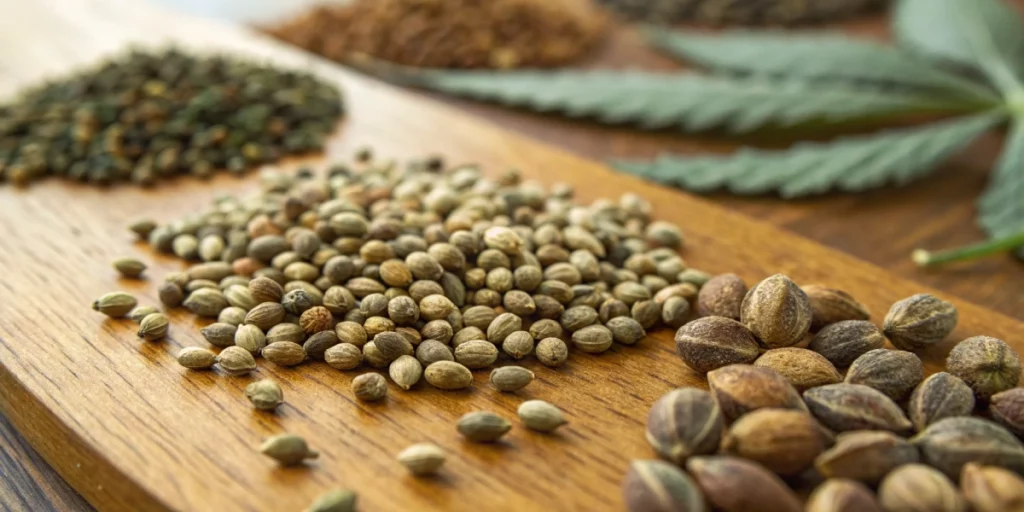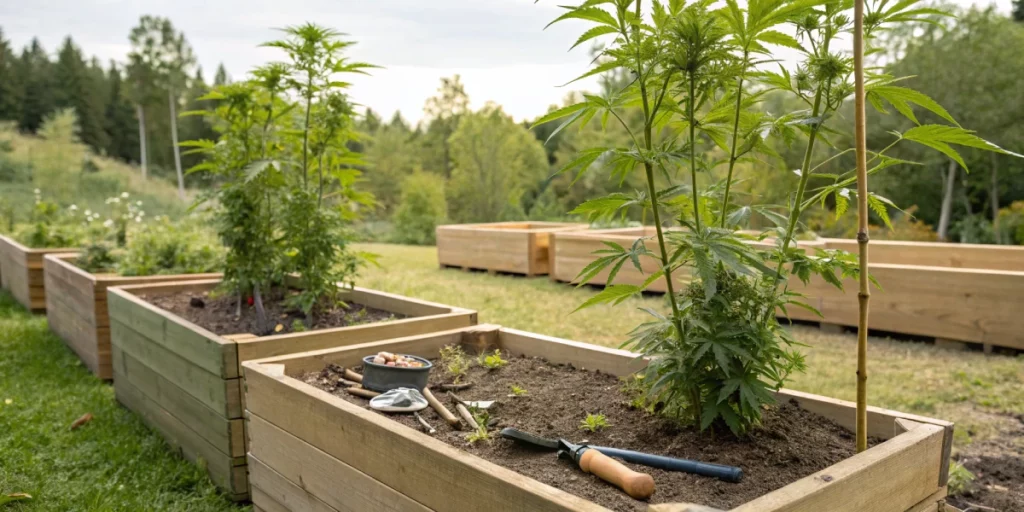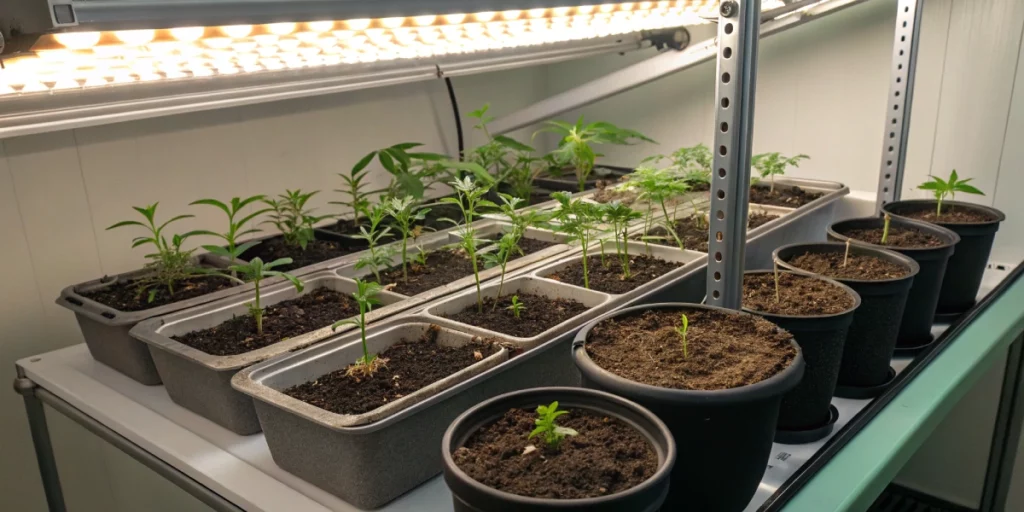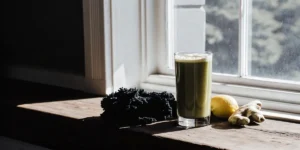Legal Landscape for Cannabis Seeds in Maryland
State regulations summary
Maryland law permits medical cannabis patients to cultivate a limited number of plants at home, but recreational cultivation remains prohibited. Qualified patients must register with the state’s program before ordering seed stock. Additionally, licensed growers enjoy strict oversight on seed sourcing, meaning every batch must come from approved vendors. By grasping these rules, aspiring cultivators avoid fines and legal hassles. Familiarity with the state’s published directives ensures safe, compliant handling of seed stock without surprises.
Licensing and permits
To operate as a commercial cultivator, entrepreneurs must apply for a grower’s license through the Maryland Medical Cannabis Commission. Applicants submit detailed security plans, facility blueprints, and proof of financial solvency. Moreover, the commission issues licenses in limited rounds, making early preparation essential. Once approved, permit holders can order bulk seed lots for propagation. By following each step precisely, cultivators gain timely access to premium seed genetics and avoid potential rejections.
Home-grow allowances
Registered medical patients may cultivate up to two mature and four immature plants per household. Furthermore, caregivers serving multiple patients can grow up to 12 mature plants, provided they maintain documentation. Seed acquisition for home-growers requires evidence of patient registration and a supplier’s certification. Consequently, home cultivators should plan seed purchases around license renewal dates. Staying organized not only meets legal thresholds, but also optimizes plant health and yield potential.
Popular Strains for Maryland Climatic Zones
Indica-dominant favorites
Maryland’s humid summers suit hardy indica varieties that resist mold and mildew. Strains like Blueberry and Northern Lights thrive in this climate, offering dense buds and robust root systems. Their shorter flowering cycles help avoid rainy autumns that can threaten resin quality. Additionally, their compact growth habit fits limited indoor spaces. Growers enjoy predictable yields and potent resin profiles, making indica-heavy genetics a reliable pick for both beginners and seasoned cultivators.
Indica-rich seeds also lend themselves to controlled environment agriculture. By employing simple trellis techniques, cultivators can boost light penetration and airflow. With these practices, plants develop uniform bud sites and mature simultaneously. As a result, harvests finish before nighttime temperatures drop significantly. For Maryland cultivators aiming for consistent potency and fragrance, indica-dominant seeds deliver performance with minimal risk.
Sativa-dominant picks
Sativa-leaning genetics like Durban Poison Auto and Jack Herer flourish under long summer daylight. These strains stretch tall and benefit from trellising to manage vertical growth. Moreover, their resinous buds offer uplifting effects prized by medical patients treating fatigue or mood disorders. However, extended flowering periods require careful planning to avoid early fall rains. By starting outdoors in late spring, growers capitalize on peak sun exposure. Such timing yields top resin production and vibrant terpene expression.
Indoor growers seeking sativa vigor often turn to autoflower hybrids. These seeds shift into bloom based on age rather than light cycle, allowing faster turnarounds. Consequently, cultivators can complete multiple harvests before humidity rises. When paired with regulated temperature and humidity controls, indoor sativas reach maturity with excellent flower density. For gardeners wanting an energetic, cerebral high, sativa picks offer dynamic effects alongside decorative foliage.
Hybrid blends
Hybrid seeds combine the best traits of indica and sativa parents, creating well-rounded profiles for Maryland’s variable climate. Strains like Girl Scout Cookies and Wedding Cake deliver manageable height and shorter bloom times without sacrificing potency. Additionally, hybrids often exhibit improved resistance to pests and mildew. These balanced genetics suit outdoor plots exposed to summer storms, as well as indoor tents with limited headroom. Gardeners gain flexibility, harvesting robust yields anywhere they grow.
By selecting regionally tested hybrids, cultivators access genetics bred for Mid-Atlantic conditions. Many seed banks label offerings by climate zone, simplifying choices for Maryland growers. As a result, hybrids adapted to temperate summers require less trial and error. They also respond well to pruning and low-stress training, enabling dense canopy structures. With these seeds, yield consistency improves and overall plant health remains high.

Where to Source Quality Seeds
Licensed dispensaries
Medical cannabis dispensaries in Maryland sometimes stock seed packages for registered patients. These outlets guarantee state-approved genetics and often provide cultivation guidance alongside sales. By purchasing at dispensaries, home-growers secure legally vetted seeds and avoid cross-border shipping uncertainties. Dispensary staff typically share practical tips on germination and nutrient schedules. Such personalized service simplifies the hunt for reliable stock and fosters a supportive grow community.
Visiting multiple dispensaries can reveal price differences and rare strain offerings. In addition, some locations host workshops or demo gardens showcasing plant development. These events allow prospective growers to inspect parent plants and compare phenotypes. Armed with firsthand observations, buyers feel confident in their seed choices. Plus, dispensary warranties or replacement programs may cover low germination rates, adding peace of mind.
Reputable online seed banks
Several established seed banks ship nationwide to medical growers, often featuring extensive strain libraries. Top vendors provide germination guarantees, discreet packaging, and customer reviews to guide selections. Moreover, many maintain genetics specifically bred for humid regions, including Maryland. Orders arrive with clear planting instructions and expected bloom times. By comparing vendor ratings and lab test results, cultivators ensure they receive authentic, high-performance seeds. In addition to traditional sales, cannabis seed auctions offer growers a chance to access rare or limited-edition strains at competitive prices.
Online seed banks also host loyalty programs and seasonal promotions. These benefits reduce costs for repeat customers purchasing in bulk. Additionally, detailed strain descriptions help align choices with personal preferences, whether the goal is high THC potency, CBD content, or unique terpene profiles. By leveraging community forums and vendor support, growers gain insight into best practices before seeds reach their door.
Local seed shops
Independent gardening stores around Maryland sometimes stock cannabis genetics alongside heirloom vegetable seeds. These shops offer hands-on buying experiences, where staff can recommend soil mixes, lighting equipment, and pest control solutions. Local seed shops often collaborate with community growers to host meetups or seed swaps. Through these connections, newcomers access home-tested strains and practical advice. Such grassroots networks foster shared learning and encourage experimentation with regionally adapted genetics.
Exploring local shops also reveals niche breeders specializing in unique traits, like short-stature plants or rare terpene expressions. While selections may vary by season, visits cultivate relationships that benefit long-term growing. Owners may alert customers to limited releases or new hybrid batches. Consequently, growers gain early access to exceptional seeds that might not appear on large online platforms.
Assessing Seed Quality and Genetics
Germination rate tests
To test viability, growers perform simple germination trials by placing seeds between damp paper towels. Healthy seeds sprout taproots within 24 to 72 hours. Recording success rates reveals the quality of seed batches before soil planting. Additionally, soaking seeds in water first can soften shells and speed up germination. By tracking results, gardeners decide whether to proceed with a full crop or request replacements from vendors. Reliable germination translates into predictable canopy density and optimized resource use.
For larger batches, testing at least 10% of seeds yields a clear picture of overall viability. For instance, if eight out of ten sprout, the grower can estimate expected yields and adjust planting density accordingly. Furthermore, segregating weaker seeds prevents wasted space in grow trays. This upfront diligence saves time and energy while ensuring uniform plant development from the outset.
Genetic stability markers
Genetic stability indicates how consistently offspring express desired traits across generations. Seed banks often track stability by growing multiple plant cohorts under identical conditions. Growers look for uniform height, bud structure, and aroma profiles. Strains with high stability produce homogeneous crops, simplifying harvest timing and drying schedules. By contrast, unstable genetics can yield variable batches requiring extra culling and sorting, which increases labor demands.
To verify stability, review vendor test results or request lineage information. Some breeders employ molecular markers to confirm genetic purity. Those records provide insight into trait inheritance and help predict plant behavior. Growers who invest in well-documented seed lines avoid surprises like unexpected flowering times or unbalanced cannabinoid ratios.
Third-party lab reports
Independent laboratories test seed batches and flower samples for potency, terpene profiles, and contaminant levels. Lab reports guarantee that seeds produce safe, high-quality product free from pesticides, heavy metals, and mold. Reviewing those reports before purchase ensures alignment with medicinal or recreational goals. Additionally, lab data helps growers set benchmark targets during cultivation, so they can fine-tune feeding schedules and environmental parameters.
Many seed banks publish lab results online or include printed certificates with orders. By comparing cannabinoid percentages and terpene diversity, cultivators choose genetics that best suit their preferences—whether focused on pain relief, relaxation, or creativity. Informed decisions reduce wasted resources and maximize the therapeutic or sensory benefits of each harvest.
Cultivation Tips for Maryland Growers
Soil and nutrient recommendations
Maryland’s clay-rich soils benefit from amendment with organic matter like compost, perlite, and worm castings. These additions improve drainage and oxygen exchange at the rootzone. Growers should aim for a loamy mixture with a pH between 6.0 and 6.5 to optimize nutrient uptake. Utilizing slow-release organic fertilizers promotes steady growth without risking nutrient burn. By feeding plants with balanced N-P-K ratios during vegetative stages, cultivators encourage vigorous root and stem development.
During bloom, shift to phosphorus and potassium-focused blends to support bud formation. Additionally, foliar sprays containing calcium and magnesium help prevent common deficiencies. Regular soil testing can guide adjustments, ensuring nutrient levels remain within ideal ranges. Ultimately, a tailored feeding regimen yields robust plants with abundant flowers and potent resin.
Climate and seasonal timing
Spring in Maryland brings warm days and cool nights, offering a natural environment for plant establishment. Start seeds indoors in March under grow lights, then harden off seedlings by mid-May. Transplant outdoors only after the last frost date—typically late April to early May in most regions. Outdoors, plants enjoy long summer days and moderate humidity, but they require monitoring for heat spikes and moisture fluctuations.
As fall approaches, reduce watering and monitor trichome development to pinpoint harvest windows. Most strains finish flowering by late September to early October, before heavy rains can harm bud integrity. For continuous harvests, consider staggered planting of autoflower varieties. This approach spaces out workloads and extends fresh flower availability into early winter.
Pest and mold prevention
Warm, humid conditions in Maryland can invite pests like spider mites and powdery mildew. To stay ahead, inspect plants weekly and introduce beneficial insects such as predatory mites or ladybugs. Additionally, maintain proper airflow with oscillating fans and prune lower foliage to reduce damp zones. Early identification and targeted organic sprays, like neem oil or insecticidal soaps, contain outbreaks before they spread.
Implementing a strict sanitation routine for tools, pots, and grow areas further minimizes contamination risks. For outdoor grows, install fine mesh netting to exclude larger pests like deer or rabbits. By combining preventative measures with vigilant observation, cultivators protect their crop and maintain consistent quality from seed to harvest.

FAQs about cannabis seeds Maryland
Is it legal to ship cannabis seeds to Maryland?
Shipping seeds directly to medical growers is allowed when sent by a licensed supplier. Carriers must verify patient registration before delivery. Therefore, recipients should confirm their legal status and present proper documentation at the point of delivery.
How many plants can I legally grow at home?
Registered patients may cultivate up to two mature and four immature plants per household. Caregivers serving multiple patients can grow up to 12 mature plants, following state guidelines and maintaining accurate records.
Do I need a medical card to buy seeds?
Yes, purchasing seeds requires active registration with Maryland’s medical cannabis program. Without a valid card, home cultivation and seed purchases remain illegal.





